Sometimes interchangeable lens users consider compact cameras as barely above a smartphone in terms of image quality. However, the days of $300 bridge cameras and pocket-point-and-shoot dominating this field are now over.
Compact cameras are characterized by their fixed, non-interchangeable lenses. While they may appear similar, there are two essential factors to consider before making a purchase decision.
Firstly, the attached lens type: Weather it is prime lens or zoom. Since the lens is built-in, it must perform all of the tasks you want the camera to accomplish. A single focal length prime lens may suffice, or you may prefer the versatility of a zoom lens.
Secondly, viewfinders are an important consideration: If you primarily use the camera’s rear screen, a viewfinder may not be necessary, providing you with more options for camera selection. However, some photographers cannot do without a viewfinder.
Therefore, when selecting the ideal compact camera, these are the two critical considerations to keep in mind. Keeping these in mind, we have compiled a list of the top compact cameras available right now.
Compact cameras are as competitive as any other digital design and come in all flavors, including ultra-high-resolution full-frame sensors with top-quality fixed lenses. So let’s take a look at the best compact cameras of 2023!
Sony RX1R II
Benefits: The Sony RX1R is a compact camera for professionals who want the most resolution, dynamic range, and image quality in an (almost) pocket-sized package. 42.4 megapixels using the same sensor as the A7 series is an incredible benefit for nearly any application, from street to landscape photography. And the 35mm focal length is versatile and useful for everything from street to portrait photography.
Drawbacks: 42.4 MP files are massive and will bog down editing speed if your computer doesn’t have the processing power to handle them. Sony menus are some of the worst in the photography world and take some getting used to.
At 507 g. the Sony RX1R II is one of the heaviest “compact” cameras around (except for the Leica Q2) and the full-frame lens makes it too big to slip into a pocket. At this price, I would have liked to see weather sealing as well.
- Sensor Size: Full frame (35 mm x 24 mm)
- Resolution:4 MP
- Lens: 35mm F2.0 ZEISS Sonnar T lens
- Weight: 507 g.
- Price: Check On Amazon
Fujifilm X100V
Benefits: Fujifilm’s X100 line is immensely popular for good reason. The physical control dials limit menu diving and offer a uniquely analog experience in a digital world. The fixed 23mm f/2 lens is equivalent to roughly 35mm in full-frame speak and is a versatile focal length for all sorts of photography.
The X100V is also the first of Fujifilm’s compacts to offer weather sealing, however, it comes as an optional $100 upgrade via the AR-X100 adapter ring and the PRF-49 protection filter. If post-processing is a bore for you Fujifilm’s subtle yet high-quality Film Simulations give you a suite of in-camera recording options, including Eterna, a flat profile perfect for the 4K 30p resolution video of the X100V.
Drawbacks: Fujifilm’s 23mm f/2 lens has a respectable 8.5-inch minimum focus distance, however, it is extremely soft unless stopped down to f/4 or more. Also for photographers focused on images and portability over video the Ricoh GR III is smaller, sensor stabilized, and less expensive.
- Sensor Size: APS-C (23.5 mm x 15.6 mm)
- Resolution:1 MP
- Lens: Fujinon 23mm f/2 lens
- Weight: 478 g.
- Price: Check On Amazon
Sony ZV-1

The Sony ZV-1 is a compact digital camera designed for vloggers and content creators. Some benefits and drawbacks of this camera include:
Benefits: Excellent video quality: The Sony ZV-1 can record 4K video at up to 30 frames per second and 1080p video at up to 120 frames per second. The camera also has advanced autofocus and image stabilization, which helps to produce smooth and stable footage.
User-friendly design: The Sony ZV-1 is designed with vloggers in mind, and it includes features like a vari-angle LCD screen, a built-in ND filter, and a dedicated button for switching between stills and video mode. The camera is also compact and lightweight, which makes it easy to carry around and use.
High-quality audio: The Sony ZV-1 has a built-in microphone with a windscreen and noise-cancellation technology, which helps to produce clear and high-quality audio. The camera also includes a hot shoe for attaching an external microphone.
Fast performance: The Sony ZV-1 has a fast autofocus system and can shoot at up to 24 frames per second in burst mode. The camera also has a fast startup time and minimal shutter lag.
Drawbacks: Limited zoom range: The Sony ZV-1 has a fixed 24-70mm zoom lens, which means that it is not ideal for capturing distant subjects or for zooming in on details.
No viewfinder: The Sony ZV-1 does not include a built-in electronic viewfinder, which may make it difficult to use in bright sunlight or in other situations where it is hard to see the LCD screen.
Limited battery life: The Sony ZV-1 has a relatively short battery life, which may require users to carry extra batteries or to charge the camera frequently.
Limited manual control: The Sony ZV-1 is designed for vloggers and content creators who may not need or want advanced manual controls. However, this means that the camera may not be ideal for more experienced photographers who prefer to have more control over their settings.
- Sensor Size: 1″ (13.2 mm x 8.8 mm)
- Resolution: 20.1 MP
- Lens: 2.7x Optical Zoom Lens (24-70mm f/1.8-2.8)
- Weight: 294 g.
- Price: Check On Amazon
Canon G7 X Mark II
Benefits: Sometimes a fixed prime lens just isn’t enough, especially for generalist photographers who want a little of everything in a single body. The Canon G7 X Mark II uses a 24-100mm focal length that can shoot everything from landscape to nature images.
Uncropped 4K 30p, 120 fps Full HD video, and a selfie-orienting LCD panel make it an excellent vlogger’s tool as well. While not weather resistant or ultra-high resolution the Canon G7 X Mark III is the best generalist compact camera of 2020!
Drawbacks: the smaller 1″ sensor is relatively large but more typical of compact cameras. The f/1.8 maximum aperture and image stabilization system helps mitigate this somewhat. But the G7 X Mark II will definitely struggle in low-light settings.
- Sensor Size: 1″ (13.2 mm x 8.8 mm)
- Resolution: 20. MP
- Lens: 2x Optical Zoom Lens (24-100mm f/1.8-2.8)
- Weight: 304 g.
- Price: Check On Amazon
Leica Q2
Benefits: The Leica Q2, even more than the Sony RX1R II, feels like a premium compact camera. You get slightly more resolution (47.3 vs 42.4 MP) but the Leica Q2 has a not only a faster aperture (f/1.7 vs f/2) but a full weather-sealed body to keep out dust and moisture. The 28mm lens may or may not be a deal-breaker, depending on how much you love the focal length.
The “Leica look” is preserved, both in-camera body styling and image output. Also, the shutter speed maxes out at a blazing fast 1/40000ths of a second, allowing you to avoid using neutral density filters when shooting wide open during the day.
Drawbacks: Two major drawbacks – size and cost. At 718 g. The Leica Q2 is massive and while it’s technically a compact it’s larger than many full-frame and crop interchangeable lens cameras on the market.
And nothing Leica comes cheap. You’re paying nearly $5000 for this camera. Granted, you really do get what you pay for – a 47.3 MP full-frame sensor, a fast f/1.7 lens that’s sharp as a razor, connected to a weatherized body that outputs 4K video with full touchscreen functionality.
- Sensor Size: Full frame (35 mm x 24 mm)
- Resolution:3 MP
- Lens: Leica Summilux 28mm f/1. 7 ASPH
- Weight: 718 g.
- Price: Check On Amazon
Ricoh GR III
Benefits: The Ricoh GR series are considered some of the best street photography lenses on the market right now. They are small, discrete, simple to operate, and offer excellent image quality thanks to their relatively large, stabilized APS-C sensors.
It also includes touchscreen functionality and a rugged magnesium chassis to weather shocks and drops in the field. At 302 g. It is incredibly light and the retractable 18mm lens makes it truly pocket-sized!
Drawbacks: The fixed f/2.8 lens is not super slow but not especially bright. While the IBIS system helps compensate with slower shutter speeds you will still struggle in lower-light environments. It is not a bokeh lens, either.
I love the 18mm focal length as it’s perfect for environmental shots that have storytelling elements. However, it can be difficult for people used to a normal field of view as it’s on the cusp of wide-angle.
- Sensor Size: APS-C (23.5 mm x 15.6 mm)
- Resolution:2 MP
- Lens: GR 28mm f/2.8
- Weight: 302 g.
- Price: Check On Amazon
Additional resources about gear recommendations can be found here.
Thanks for reading, I hope you enjoyed the article if you have any questions just post them below & I will be happy to answer you.
If you enjoy the site, don’t forget to subscribe, we will only inform you when a new article is posted.




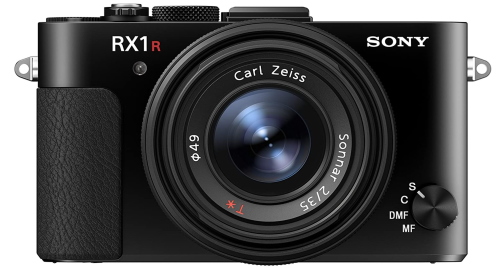
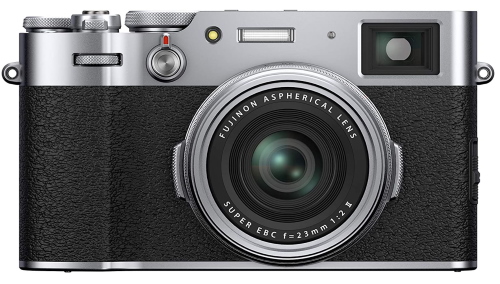
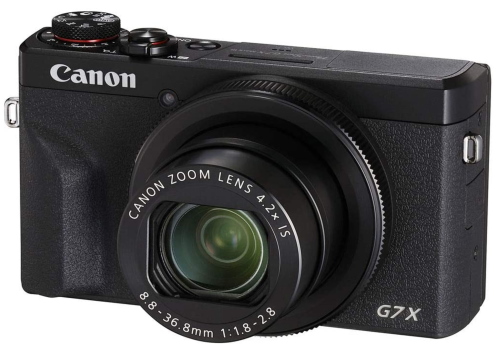



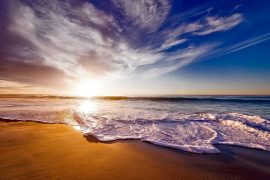

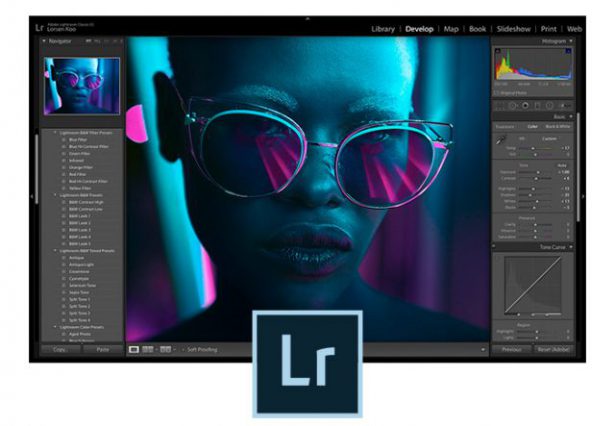
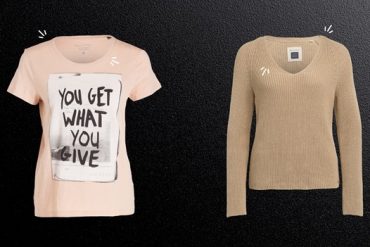
Thank you for posting this; it prompted me to recall some fond memories of my Fujifilm tiny camera from years ago… I had a particular interest in photography since it is, in my opinion, one of the best forms of art, second only to the art of generating money online… However, as a newbie, I found many of the short explanations you provided beneath the cameras to be confusing. Perhaps you could reduce the information even more, or perhaps it is just me! Perhaps the website is intended for more experienced users… Anyway, thank you very much for taking the time to read this and for taking us on a little voyage into the world of small cameras.
Hey Ehab Thanks for sharing this, you got me to remember some old memories with Fujifilm compact camera … I had a special interest in Photography as I consider it one of the finest forms of art after the art of making money online lol… I have an objection though, as a beginner I didn’t understand much of the brief details you put under the cameras, maybe you can try to simplify more, or maybe it’s just me! maybe the website is made for more advanced users… anyway thanks a lot that was quite a nice short journey inside the compact cameras world.
Hi, It’s a little bit complicated and takes time to read and practice so that you can figure out the photography terms.
I have been trying to make up my mind but there are two cameras that I like. They are Canon G7 X Mark III and the Sony camera. As you may see, I’m inclined towards the former. My PC is not very powerful and pictures the weight a lot will definitely slow it down.
Thank you very much for this post!
Best of luck Paolo. Thanks for your input.
Ehab,
This is such a great list! Thank you for taking the time to research and compile it! I still remember my dad’s old camera bag that he would lug around whenever we went on family vacations, the zoo, or even just a walk to the park so he would be sure to have every possible lens and filter that he owned for every possible lighting situation that there could be! It really brings back memories. However, had he had the extensive technology and options we have today I sure he would’ve been very excited!
KARA
Thanks Kara for your input.